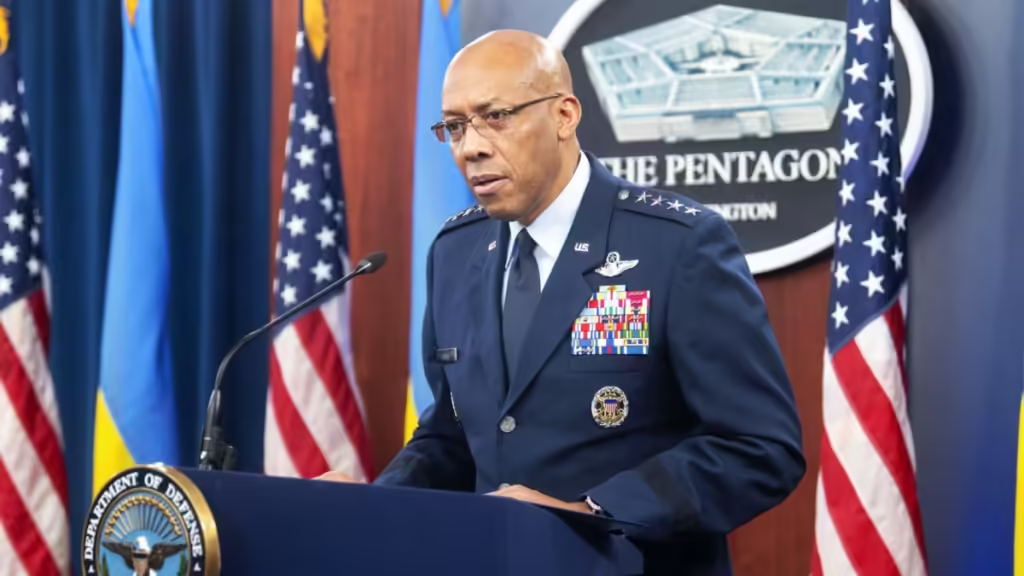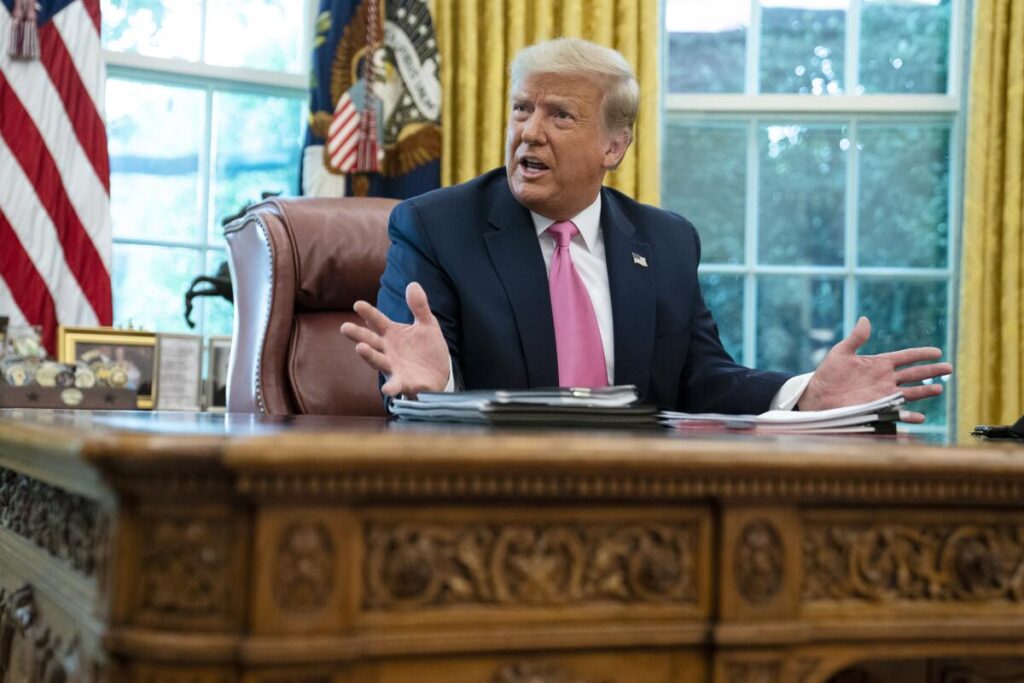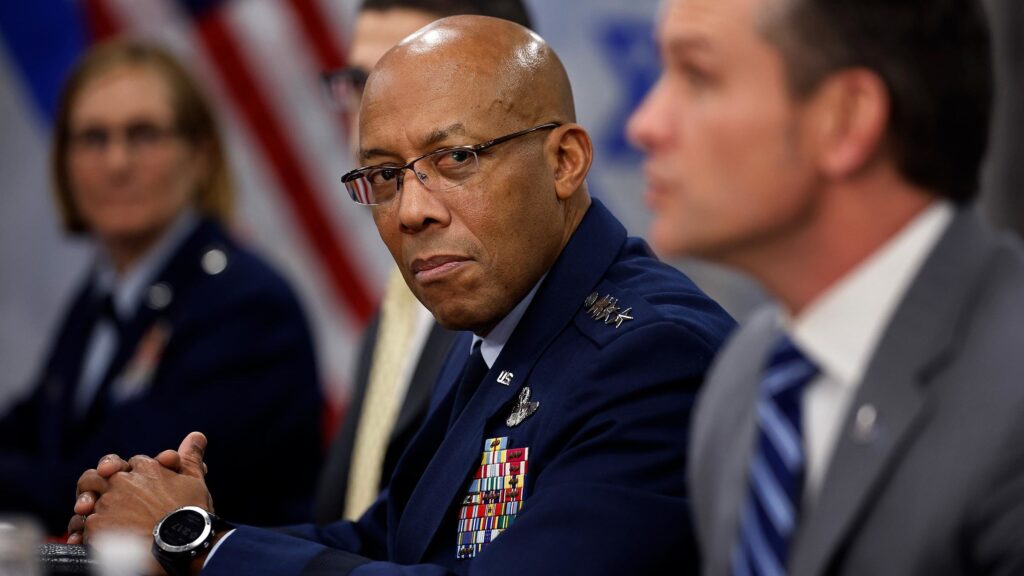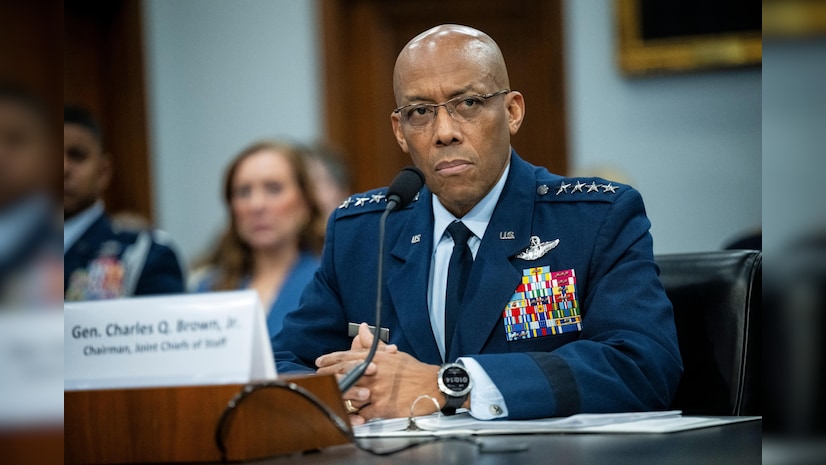
In a move that has stunned political and military circles across the country, President Trump has fired the Joint Chiefs Chairman Gen. Charles Q. Brown, Jr. amid a series of high-profile dismissals at the Pentagon. This article dives deep into the unfolding events, explains the background behind these Pentagon firings, and offers expert insights into what this could mean for the future of U.S. military leadership and national security.
Breaking Down the Headlines
The recent Pentagon firings have quickly become a topic of intense discussion among politicians, military personnel, and citizens alike. The decision to dismiss the Joint Chiefs Chairman comes at a time when questions about the direction of U.S. defense policies are already swirling. With the move widely covered in national news, many are left asking: What led to this dramatic decision, and how might it impact the country?
At its core, this story is about power, leadership, and the ever-changing dynamics within the highest levels of U.S. national defense. The administration’s decision marks one of the most significant shifts in military leadership in recent years, shaking the foundations of traditional military hierarchy.
What Prompted the Pentagon Firings?

A Shift in Policy and Leadership
The Pentagon firings, led by this high-profile dismissal, are seen by many experts as a bold reassertion of presidential control over the military’s top brass. Over the past several months, there has been growing tension between the administration and military leadership. Disagreements over strategic policy decisions, budget priorities, and international defense commitments have created a rift that ultimately led to this drastic action.
Several sources suggest that the decision was driven by a desire to realign the military’s strategic vision with the President’s objectives. In recent months, the administration had pushed for rapid reforms in defense spending and a more aggressive stance on international security. The dismissal of the Joint Chiefs Chairman, a figure traditionally seen as a stabilizing force in military leadership, signals a clear departure from past norms.
The Role of Communication Breakdown
Another critical factor appears to be a breakdown in communication. Insiders reveal that miscommunication between the President’s office and top military officials has contributed to mounting frustrations. The Joint Chiefs Chairman, who once served as a trusted advisor, may have become entangled in policy disputes that clouded his ability to execute the President’s directives effectively.
This communication gap, coupled with differing views on how to handle emerging global threats, might have been the tipping point. The President’s decision to dismiss him, along with several other senior military officials, underscores a need for a unified command structure that aligns more closely with the current administration’s goals.

Click below to read more :
Why Does This Matter?
The Chairman of the Joint Chiefs of Staff is the highest-ranking military officer in the U.S. Armed Forces. While the role is advisory, the Chairman coordinates military strategy globally and advises the President on critical decisions, such as nuclear readiness. Removing a sitting chairman mid-term disrupts institutional knowledge and relationships with global allies.
Experts argue that politicizing military leadership risks eroding public trust. “The military is supposed to be nonpartisan,” says Dr. Kathleen Hicks, a former Deputy Defense Secretary. “When leadership changes feel politically motivated, it creates uncertainty at home and abroad.”

Historical Context: A Brief Look Back
Past Pentagon Firings and Leadership Changes
Changes in military leadership are not without precedent in U.S. history. However, the scale and timing of these recent Pentagon firings set them apart. In previous decades, shifts in military command were often the result of long-standing policy disagreements or significant shifts in international relations. For example, during the Cold War, leadership changes at the Pentagon were sometimes linked to the evolving nature of nuclear deterrence and international diplomacy.
In more recent history, Pentagon firings have usually been more measured and less publicized. The current flurry of dismissals represents not only a break with tradition but also a strategic reset in the way the U.S. military is managed. This approach, whether one of decisive reform or a risky power play, is one that analysts are watching closely.

Click below to read more :
Hamas Returns the Remains of Youngest Hostages: A Nation Mourns Amid a Fragile Ceasefire
Lessons from the Past
Historically, significant leadership changes in the military have often led to periods of uncertainty and transition. For instance, during the early 2000s, shifts in military leadership coincided with major changes in U.S. foreign policy and defense strategy. Experts suggest that while such transitions can cause temporary disruption, they may also open the door to innovative approaches and a renewed focus on national security priorities.
These lessons from history underscore the importance of balancing swift decision-making with careful strategic planning. The current Pentagon firings, while dramatic, will need to be managed carefully to ensure that the integrity and effectiveness of U.S. defense operations remain intact.
Inside the Dismissals: What Really Happened?
Unpacking the Decision
The firing of the Joint Chiefs Chairman did not occur in isolation. It is part of a broader pattern of dismissals that have taken place at the Pentagon in recent weeks. Sources within the administration indicate that this move is part of a larger strategy to streamline military leadership and enforce a tighter chain of command.
Many military insiders believe that the dismissals were a response to what the President viewed as an overly cautious approach by senior military officials. The administration has repeatedly stressed the need for a more dynamic and responsive military posture—one that can adapt quickly to new challenges. In this context, the firings are seen as a step toward reinvigorating the U.S. military with fresh leadership that is more aligned with the President’s vision.
Reactions from Within the Military
The response to these events among military personnel has been mixed. Some view the dismissals as a necessary corrective measure that will help clear the way for more innovative and agile leadership. Others worry that such abrupt changes might undermine the stability and cohesion that are essential in times of international uncertainty.
A few high-ranking military officials, speaking on condition of anonymity, expressed concern that the rapid turnover could lead to gaps in critical operational knowledge. However, proponents of the decision argue that the fresh perspective brought by new leadership could revitalize morale and drive a more effective national defense strategy.
Expert Opinions and Insights
Voices from the Defense Community
Prominent defense analysts have weighed in on the recent Pentagon firings. According to one respected military strategist, the decision reflects a broader trend in which political leaders are taking a more active role in directing military policy.
“This isn’t just about replacing one individual,” he remarked. “It’s about resetting the entire leadership dynamic at the Pentagon.”
Other experts note that while change can be disruptive, it is sometimes necessary to adapt to rapidly evolving security challenges. With global tensions simmering in several regions, a unified and agile military command is essential. The administration’s move may be seen as a preemptive measure to ensure that the U.S. is better prepared to handle potential conflicts.
Reactions from Within the Military
The response to these events among military personnel has been mixed. Some view the dismissals as a necessary corrective measure that will help clear the way for more innovative and agile leadership. Others worry that such abrupt changes might undermine the stability and cohesion that are essential in times of international uncertainty.
A few high-ranking military officials, speaking on condition of anonymity, expressed concern that the rapid turnover could lead to gaps in critical operational knowledge. However, proponents of the decision argue that the fresh perspective brought by new leadership could revitalize morale and drive a more effective national defense strategy.

Implications for U.S. National Security
A New Direction for Military Strategy
The Pentagon firings mark a turning point in U.S. defense policy. With the dismissal of key figures, the administration signals its intention to overhaul military strategy and operations. This could lead to sweeping reforms in how the U.S. prepares for and responds to global security threats.
One potential outcome is a more centralized decision-making process within the Pentagon. By consolidating leadership under individuals who share the President’s vision, the administration hopes to create a more responsive and unified military force. This change, if managed well, could enhance national security and improve the country’s ability to adapt to new challenges.
Balancing Tradition with Innovation
However, the road ahead is fraught with challenges. The U.S. military has long been built on traditions and established protocols that have ensured its effectiveness for decades. Balancing these traditions with the need for innovative strategies is no easy task. Critics warn that too much change, too quickly, could erode the institutional knowledge that is vital to effective military operations.
The key will be to integrate new leadership without losing sight of the strengths that have long defined the U.S. armed forces. As the Pentagon adjusts to these leadership changes, policymakers and military planners will need to ensure that the transition is smooth and that critical operations continue without interruption.
The Future of Military Leadership
What Comes Next?
The dismissal of the Joint Chiefs Chairman and other senior officials sets the stage for a new era at the Pentagon. In the coming months, the administration is expected to announce further changes in leadership, along with a revised strategy for national defense. This new direction could include restructuring internal departments, implementing new training protocols, and rethinking budget priorities.
Observers are already speculating on who might fill these high-profile roles. The selection process is expected to be closely scrutinized, with an emphasis on finding leaders who not only have the necessary experience but also align with the administration’s bold vision for the military.
Long-Term Effects on U.S. Defense Policy
In the long run, these Pentagon firings could have far-reaching implications. A more centralized leadership might lead to quicker decision-making in times of crisis. On the other hand, it may also concentrate power in ways that could limit diverse perspectives within the military hierarchy.
As the U.S. navigates an increasingly complex international landscape, the balance between swift action and measured deliberation will be critical. The success of these changes will depend largely on how well the new leadership can integrate innovative strategies while maintaining the tried-and-true elements of military tradition.
Interesting Facts and Key Takeaways
Rapid Leadership Changes
The recent flurry of dismissals represents one of the most dramatic shifts in Pentagon leadership in modern U.S. history.
Policy Over Personality
Experts suggest these firings are more about aligning military strategy with national security priorities than personal conflicts.
Historical Parallels
Past leadership changes, such as during the Cold War, led to both short-term disruptions and long-term strategic advantages.
Expert Support
Many defense analysts believe fresh leadership could reinvigorate military operations and enhance responsiveness in critical situations.
Future Uncertainty
While the benefits may include increased agility, there are concerns over potential risks to institutional continuity.
Conclusion
The decision to fire the Joint Chiefs Chairman amid a broader wave of Pentagon firings is a bold and potentially transformative move. President Trump’s decision reflects not only a personal and political statement but also a strategic recalibration of the United States’ military leadership. While the move has sparked controversy and concern among some quarters, it also opens the door to new ideas and approaches in national defense.
In an era marked by rapid global changes and emerging security challenges, the U.S. military’s ability to adapt is more important than ever. As new leaders step into these critical roles, the coming months will be crucial in determining whether these changes will strengthen national security or lead to further instability.
For now, the nation watches closely as the Pentagon embarks on this tumultuous journey of transformation. The hope is that, amid the chaos, a new chapter of effective and responsive military leadership will emerge—one that is capable of meeting the challenges of today and tomorrow.
Frequently Asked Questions (FAQs)
Q1: What exactly are the Pentagon firings?
A1: They refer to a series of high-profile dismissals at the Department of Defense, including the Joint Chiefs Chairman, marking a major leadership shift.
Q2: Why did President Trump fire the Joint Chiefs Chairman?
A2: It was driven by policy disagreements and a need for a unified command structure, compounded by communication breakdowns.
Q3: How might these firings affect U.S. national security?
A3: The impact is uncertain—some expect quicker crisis response, while others worry about losing essential institutional knowledge.
Q4: Is this kind of leadership change common at the Pentagon?
A4: Leadership changes happen, but the scale and timing of these firings are unprecedented in recent years.
Q5: What can we expect in the near future regarding military leadership?
A5: More leadership appointments and potential restructuring are likely as the administration seeks a more agile military force.
Q6: How have military experts reacted to these changes?
A6: Opinions are mixed; some see it as a chance for improvement, while others fear disruption and concentrated power.